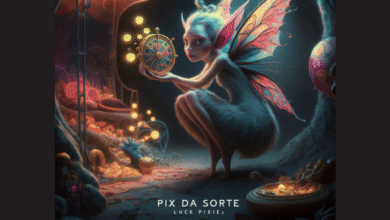Hegseth Cowboy Statue Gift Held: Symbolism, Controversy, and Political Undertones

The incident surrounding the cowboy statue gift held for Pete Hegseth has garnered attention across political, media, and cultural circles. Known as a Fox News host and veteran, Hegseth has often been a lightning rod for conservative commentary. The cowboy statue, reportedly gifted by admirers or affiliates, has become a flashpoint for debate regarding military symbolism, patriotism, and the intersection of media influence and political identity.
This article offers a comprehensive exploration into the origin, implications, and reception of the cowboy statue gift held for Hegseth, its delayed delivery, and the broader symbolic and cultural landscape that surrounds such a gesture.
The Origin of the Cowboy Statue Gift
Who Commissioned the Statue?
The cowboy statue in question is said to have been commissioned as a tribute to Pete Hegseth’s military service, media influence, and vocal support for American traditional values. Although exact details remain under wraps, sources suggest that the statue was:
-
Funded by a private donor or veteran group
-
Designed by a Western-themed sculptor
-
Intended to represent valor, resilience, and the American spirit
The choice of a cowboy reflects more than regional identity it evokes a deeper image of individualism, grit, and frontier justice, which aligns with Hegseth’s on-screen persona and ideological leanings.
Symbolism Behind the Cowboy Figure
The cowboy has historically represented:
-
Freedom and self-reliance
-
Resistance to centralized control
-
Traditional masculinity and work ethic
-
Military parallels in strength and courage
In the context of gifting such a statue to Hegseth, it is clear the intention was to honor his:
-
Pro-military commentary
-
Advocacy for American exceptionalism
-
Unapologetic conservative stance
As a metaphor, the cowboy stands tall against modern uncertainties, mirroring the hard-line values Hegseth often promotes on Fox & Friends Weekend.
Why Was the Statue Gift Held?
Legal and Ethical Considerations
One of the biggest questions surrounding the Hegseth cowboy statue gift is why it was held, delayed, or intercepted. Various factors may have contributed, including:
-
Federal ethics laws that limit gifts to media personalities from politically affiliated groups.
-
Security protocols regarding unidentified or unsolicited packages.
-
Corporate policies at Fox News that restrict personal gifts of significant value.
If the gift exceeded certain monetary thresholds, it would likely trigger reporting obligations or scrutiny under Federal Election Commission (FEC) or FCC guidelines particularly if the gift could be interpreted as a form of influence or sponsorship.
Political and Media Sensitivities
Given Hegseth’s role as a media figure with political clout, accepting a high-value symbolic gift could spark:
-
Accusations of bias
-
Conflicts of interest
-
Backlash from opponents or watchdog groups
Thus, holding or delaying the statue may have been a preemptive measure to mitigate reputational risk for both Hegseth and his network.
Public and Political Reactions
Support from Conservative Circles
In conservative media and online forums, many supporters see the cowboy statue as a:
-
Fitting tribute
-
Visual representation of American backbone
-
Counter-narrative to cancel culture and progressive critiques
It is perceived as an emblem of patriotic honor a symbol that affirms the ideals often championed by Hegseth: faith, family, flag, and freedom.
Criticism from Opposing Voices
Opponents, however, argue that the statue is:
-
An unnecessary glorification
-
A theatrical political statement
-
A distraction from more substantive public service efforts
Some critics link it to hyper-nationalistic imagery, calling it performative or out of touch with modern socio-political realities.
The Broader Cultural Context
Statues as Modern-Day Political Statements
In today’s culture war landscape, statues are no longer neutral. They serve as:
-
Cultural markers
-
Political endorsements
-
Tools of ideological messaging
The gifting of a cowboy statue, particularly to a prominent conservative figure, can be viewed as part of a broader movement to reinforce certain values amid cultural transformation.
Comparison with Other Media Figures
Hegseth is not the first media personality to be the subject of symbolic gifting. Over the years, notable public figures across the political spectrum have:
-
Received custom busts or military memorabilia
-
Been gifted historically symbolic art
-
Used such artifacts in their broadcast sets or offices
In each case, these items were more than decoration they became visual shorthand for the individual’s brand, values, and tribal affiliation.
Implications for Media Ethics and Influence
Gifts and Perceived Bias
Gifts, especially symbolic ones, can impact public perception. In media, where objectivity is still considered a standard (even if often debated), receiving or even displaying such gifts might:
-
Affect journalistic credibility
-
Imply allegiance to specific ideologies
-
Invite scrutiny over impartiality
For Hegseth, whose persona is openly partisan, this line may be less of a concern. Yet for his employers or affiliated platforms, the optics of such gifts remain sensitive.
The Blurred Line Between Host and Icon
When media hosts become symbols themselves, gifts like the cowboy statue reinforce their celebrity and cult status. The danger, however, lies in losing the boundary between commentator and influencer, or reporter and advocate.
What Happens Next with the Cowboy Statue?
Reports suggest the statue remains in storage or administrative custody, pending resolution. Possible outcomes include:
-
Private delivery to Hegseth off-camera
-
Public unveiling during a special segment
-
Return to the sender if ethical concerns cannot be resolved
The controversy surrounding the gift may ultimately elevate its status further turning a single statue into a flashpoint of symbolic debate in America’s cultural and political discourse.
Conclusion
The cowboy statue gift held for Pete Hegseth represents far more than a decorative token. It is a symbol of ideological allegiance, patriotism, and media influence in modern America. While its fate remains uncertain, its significance has already taken root in public imagination.
In a time where political imagery, media ethics, and cultural symbolism intersect more than ever, the story of this statue provides a mirror into contemporary identity politics revealing how even a silent sculpture can speak volumes.



